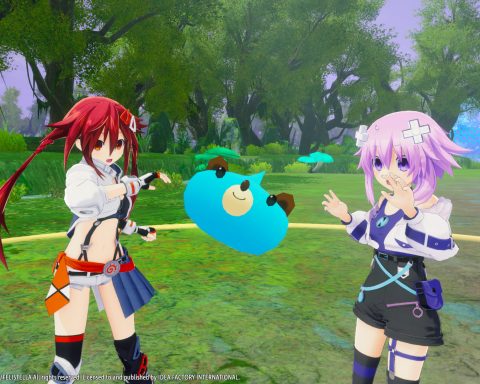Review by Matt S.
Ravensword: Shadowlands is a good lesson that I hope developers learn. Back in 2012, which it first launched on iPhone and iPad, it was hailed as something amazing, as an effort to do the Elder Scrolls aesthetic on mobile. Back then mobile gaming was still fairly new and full of promise (free-to-play and gacha games weren’t a thing yet), and Ravensword was a vision for that future.
Fast forward the better part of a decade, and now Ravensword is on Nintendo Switch. A console with which we already have Skyrim, Kingdoms of Amalur, The Witcher 3, and any number of other excellent western RPGs in the same vein as this. Ravensword highlights the kind of game that “ages poorly,” in that what made it so impressive initially were all technical features. You’d sit back and wonder “how did they make this work on mobile?!?” However, anything that makes a game a classic is entirely absent from Ravensword, and with every year the game becomes less and less relevant.
That’s not to say it isn’t fun in the abstract, because it has its moments. The world is expansive, there are plenty of enemies to fight and exotic locations to visit, and the action is very Elder Scrolls in approach and style. There are skills to earn and use to customise your character, and while the aesthetics look a little primitive, it’s still wondrous in the same way something like Morrowind is, with a soundtrack that surely veers close to plagiarism for that series (which is fine, in the sense that that is excellent music to plagiarise).
It just doesn’t take long for the weaknesses in the game to show themselves. The world might be expansive, but there’s a dearth of things to do in it, besides to make the trip between the limited number of objectives you’re given. There aren’t that many side-quests, and none of them are exactly of the quality of The Witcher 3 as small narrative experiences in their own right. Additionally, the world feels empty, bland, and limited. Worldbuilding is an art form, but unfortunately, the developers learned how to do that, and even with the little things this game manages to be a consistent disappointment to anyone looking for a memorable experience. Take the books as an example – in real Elder Scrolls games, there are books everywhere, and each of those books tells stories to help build the world’s lore and character. In Ravensword, the books are there, but they’re not interactive. It’s window-dressing with no substance behind it, and that issue with the books perfectly encapsulates the broader problems that this game faces.
Balancing is another issue. Because there are so few quests and objectives, Ravensword ends up being very linear, but difficulty spikes mean that you’ll need to frequently spend time running around grinding away by fighting the same few enemies that you find in an area until you’re of an appropriate level to push on. Back on the iPhone, this was fine because you’d be playing for short bursts and, again, it was just so impressive that you were playing it at all. On the Switch, though, there’s much better.
Finally, there’s the narrative. Now, the Elder Scrolls series has never been that well known for offering an exceptional “main” story. However, the lore and worldbuilding was always incredible, and there were all kinds of emergent moments within the extensive side-quest system that meant that you would certainly be drawn deeply into the stories that were being written as you played. Ravensword, on the other hand, is instantly forgettable. As soon as you put that controller down, you’re going to forget everything that you’ve just done (which is, for the most part, follow along with an incredibly forgettable main narrative).
As I noted in my original review of Ravensword, many years ago now: “It’s also impossible to do some of the things that a typical Elder Scrolls game lets you do to help draw players into the universe. I can’t kill civilians in Ravensword. I can’t become a property owner. There’s only the one city to visit, and only the occasional building elsewhere. In other words, I don’t get to Role Play in Ravensword, an absolutely critical component in the success formula for western RPGs that the game so desperately wants to be like.”
I’ve had fun playing this game again. It goes to show the strength of the material that Ravensword is based on that a low-budget, massively stripped-down take on the formula can still be enjoyable. I have fond memories of playing this through on my iPad over my Christmas holiday back in 2012, and there was a rush of nostalgia from doing so again on the Switch. However, the lesson that developers really should take from this is that it doesn’t matter how technically impressive a game is if you can’t deliver something memorable from the artistic side of things. Without a great narrative, interesting design elements, creative gameplay or similar, your game is dated the moment it has been released, and as a result every time you try to re-release it on new consoles and devices, you’re going to experience diminishing returns and an increasingly tarnished legacy.
– Matt S.
Editor-in-Chief
Find me on Twitter: @mattsainsb










